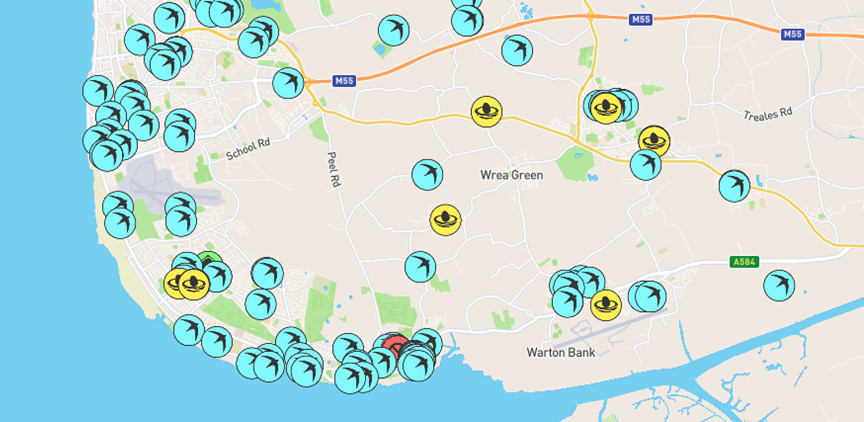It’s ‘eyes to the skies’ over the next few days to spot Swifts returning to Lytham St. Anne’s as they migrate from eastern and southern Africa to enjoy their Summer in the UK. Swifts come back to grace our skies in late April and early May – and these amazing birds should be returning to the Fylde coast this week. A month or so ago they were spending their winters in Africa. The RSPB map (featured photograph) showing Swifts arrival to the Fylde Coast can be found here: https://www.swiftmapper.org.uk/
Swifts migrate 3,400 miles twice a year, stopping off to refuel in places like Portugal and France along the way. But Swifts only have one thing on their minds – to mate. Swifts pair for life, returning to the same site each year for a little nest renovation before laying and incubating their eggs. They like to live in houses and churches, squeezing through tiny gaps to nest inside roofs. But as more old buildings are renovated and gaps in soffits closed up, Swift nest sites are fast disappearing. They stay in the UK only long enough to raise their young, before heading back south, through France and Spain to return to countries like Mozambique and other nations in southern Africa.
Swifts (pictured below) are easily spotted as they rarely stop flying. In fact, the only time that swifts land after fledging is at their own nest, to feed their chicks, when they themselves have bred two or three years later. Other than this, swifts eat, mate, gather nest material and even sleep on the wing.
Swifts also have some other inventive techniques for survival. They drink by gliding over water and taking sips, or by catching raindrops. They bathe in much the same way, flying slowly through falling rain or ‘dusting’ themselves over waterbodies: smacking the surface of the water with their bodies before bouncing back up and shaking off the droplets.
Despite living life in the fast lane and weighing about the same as a Cadbury’s Crème Egg, swifts are incredibly long-lived birds. They can live up to 21 years, with an average lifespan of five and a half years – practically ancient compared to our robins, which survive for just 13 months on average.





















